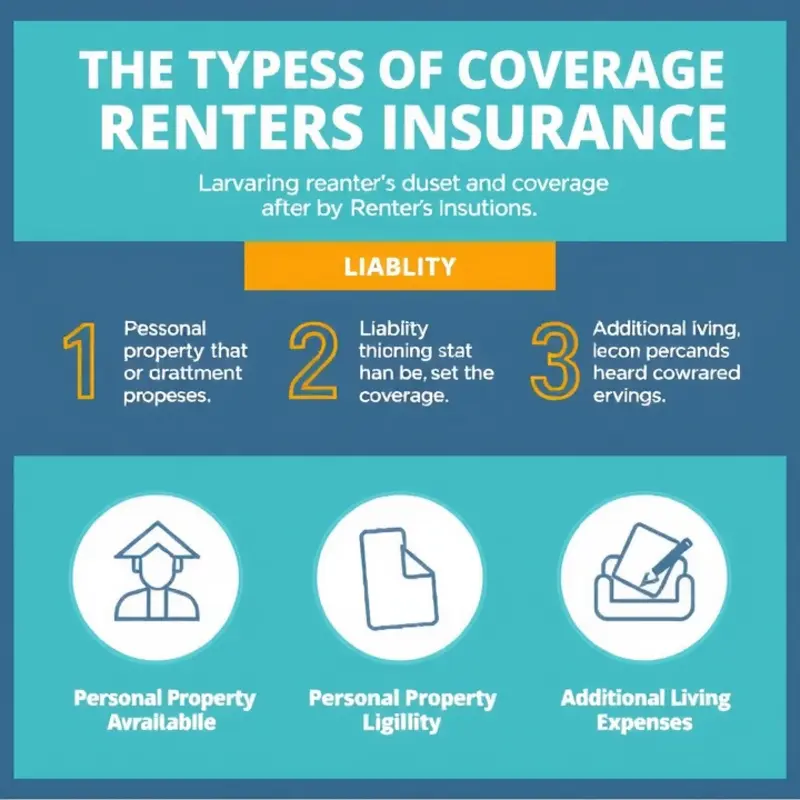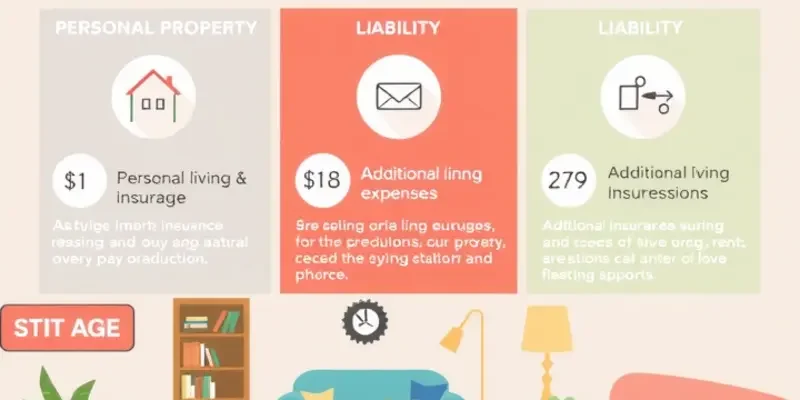Navigating the world of renting can be overwhelming, especially with the constant concern for safety and securing your belongings. What happens if your apartment experiences a fire, theft, or water damage? Renter’s insurance emerges as a vital shield against these unforeseen circumstances. Designed not just for peace of mind, this type of insurance helps you safeguard your personal property, covering everything from furniture to electronics. Beyond protection, it can also provide liability coverage in case of accidents within your apartment, ensuring you are not left vulnerable to potentially hefty legal costs. As a renter, understanding how renter’s insurance works and its advantages can empower you to make informed decisions. This guide aims to explain the essentials of renter’s insurance, focusing on how it prioritizes safety and security while offering hassle-free solutions. Whether you’re living in a bustling city or a quiet suburb, embracing the right coverage can significantly enhance your renting experience.
What is Renter’s Insurance?

Renter’s insurance is a safeguard that every tenant should consider. It offers financial protection to renters in various scenarios, ensuring peace of mind throughout their tenancy. This type of insurance covers several essential aspects, including personal property, liability, and additional living expenses.
Personal Property Coverage
Personal property coverage is perhaps the most recognized benefit of renter’s insurance. It protects your belongings from perils such as theft, fire, or vandalism. Imagine returning home only to find your apartment burgled, with precious items like electronics or jewelry missing. In this situation, renter’s insurance can compensate you for the lost items, saving you from potential financial distress.
Liability Coverage
Liability coverage is equally essential, covering incidents where you might be legally responsible for injuries or property damage. Picture hosting a dinner party where a guest trips over your rug, injuring themselves in the process. Renter’s insurance can help cover their medical expenses, preventing a strain on your finances.
Additional Living Expenses
Life is unpredictable, and sometimes you might need to vacate your rented space due to unforeseen events like a fire. Renter’s insurance can cover additional living expenses, such as hotel costs and meal charges, until your home becomes habitable again. This aspect of coverage ensures that emergencies don’t leave you struggling for accommodation.
Real-Life Scenarios Demonstrating Value
Consider a scenario where an apartment complex suffers water damage due to a severe storm. Tenants without renter’s insurance found themselves paying out of pocket to replace water-damaged furniture and electronics. In contrast, those with insurance received financial support for their losses, demonstrating the practical benefits of having this coverage.
Another instance involves liability protection, where a tenant accidentally started a kitchen fire, causing significant damage to the apartment. Thanks to their renter’s insurance, they avoided a hefty bill for repairs—a stark contrast to uninsured neighbors who faced severe financial repercussions.
These examples underscore the importance of renter’s insurance in protecting tenants from unpredictable life events. By investing in a policy, renters are ensuring that they are not alone when misfortune strikes. For further insights on safeguarding your living space, explore this guide on renter’s insurance, offering detailed information tailored for renters prioritizing security.
Opting for renter’s insurance means choosing peace of mind, knowing that both your belongings and potential liabilities are covered. It acts as a safety net, making the journey of renting far less daunting and far more secure.
How to Choose the Right Policy

Selecting the right renter’s insurance policy requires careful consideration of various factors to ensure your needs and budget align. Let’s explore how to effectively choose a policy that provides peace of mind in your rental home.
Understanding the value of your belongings is a crucial first step. Create an inventory of your possessions, including furniture, electronics, clothing, and any valuables. Estimate their total value. This information helps determine the amount of coverage you need. An accurate assessment prevents being underinsured or overpaying for unnecessary coverage.
Next, familiarize yourself with policy limits. Most renter’s insurance policies have certain limitations on reimbursements for specific categories of items, such as electronics or jewelry. If your items exceed these limits, consider additional coverage or riders. Tailoring your policy ensures comprehensive protection.
Comparing quotes from different insurance providers is essential for finding a policy that balances coverage and affordability. Gather at least three quotes for a broader perspective. Evaluate premiums, deductibles, and coverage specifics. Lower premiums might be tempting, but examine what the policy includes. A slightly higher premium may offer significantly better protection, proving cost-effective in the event of a claim.
Policy terms can vary greatly. Scrutinize these to avoid unpleasant surprises. Understand whether the policy covers replacement cost or actual cash value. Replacement cost policies reimburse the cost to buy new items, while actual cash value accounts for depreciation, offering less at claim time.
Another important aspect is liability coverage. Adequate liability coverage protects against potential lawsuits resulting from accidental injury or property damage that occurs in your rental. Consider the risks associated with your living situation and adjust your coverage accordingly.
Also, check for coverage related to additional living expenses. This feature supports temporary housing costs if your rental becomes uninhabitable. Understanding such terms enhances your policy’s effectiveness in safeguarding your lifestyle.
On the topic of additional features, some policies may include protection against water damage, which can be particularly relevant. For more information on water-related issues in a rental context, consider visiting Water Leak Detection for Renters, which offers practical advice on prevention and detection.
Lastly, customer service and claims processing reputation are often overlooked considerations. Research current customer reviews and company ratings. Efficient customer service and hassle-free claims can make a significant difference in your overall experience.
This disciplined approach ensures you select a renter’s insurance policy that meets your specific needs, providing security and financial protection for your rental space.
Final words
Understanding renter’s insurance is a cornerstone in securing your apartment and personal belongings. It not only protects your possessions from unexpected events like fires or theft but also offers vital liability coverage. Renting should be a journey of comfort and stability, not a perpetual concern over your assets. By taking the initiative to invest in a suitable policy, you set a foundation for a worry-free living experience. Be sure to compare different options, assess your needs, and consider potential risks particular to your living situation. Renter’s insurance offers a safety net, allowing you to focus on enjoying your home without anxiety. Ultimately, being proactive ensures your safety and peace of mind in any apartment setting.









